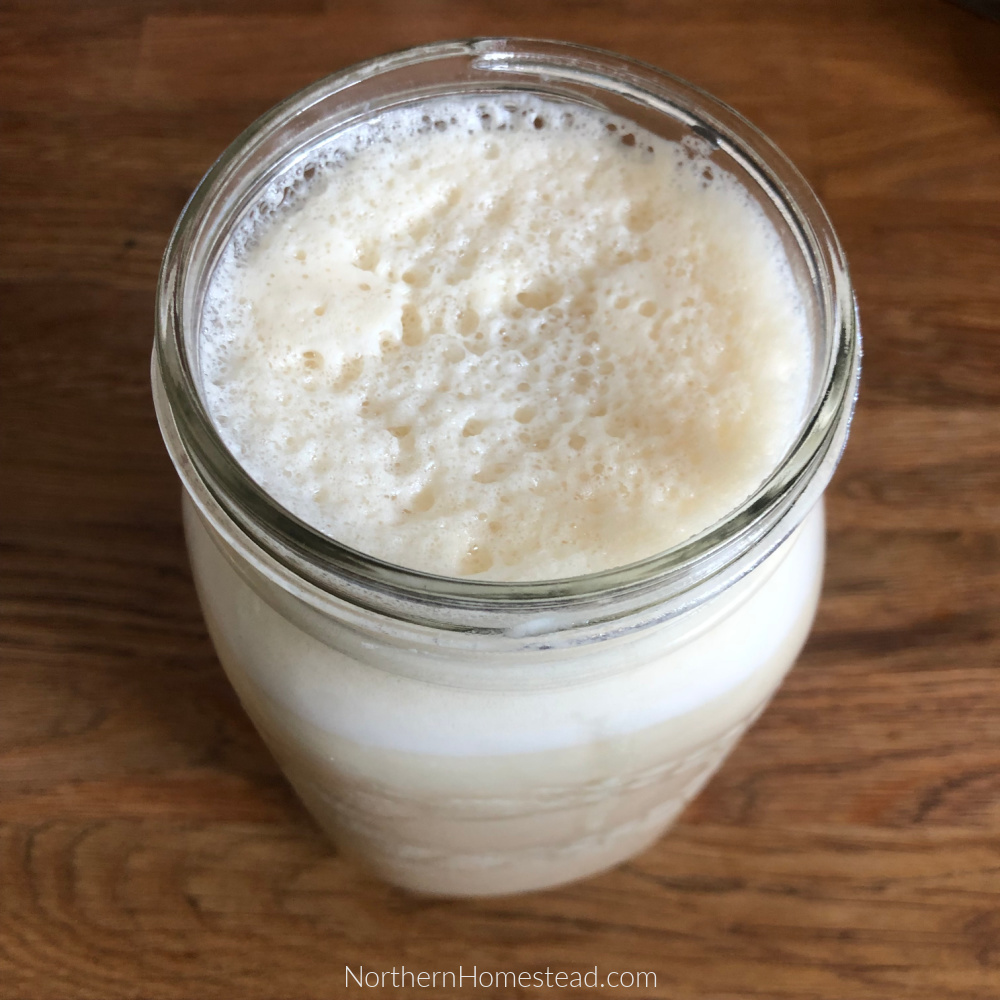
This whole bean homemade soy milk recipe is the simplest way to make soy milk. The nice thing about it is that the whole bean gets used, there are no leftovers. If you don’t know what to make with okara (soy pulp), but hate to throw away perfectly good food, this recipe is for you.
Growing up on a homestead with a dairy cow, milk has always been an important ingredient in our diet. My mom made sure I learned how to milk fairly early. It was a lot of work, and not something I enjoyed.
Now when making my own plant milk, I often think back and wonder why one would go through all the struggle with dairy if plant milk is so simple and just as good.
Speaking of simple, this is probably the most straightforward recipe out there. Try it, you might like it just as much as we do.
Why whole bean soy milk?
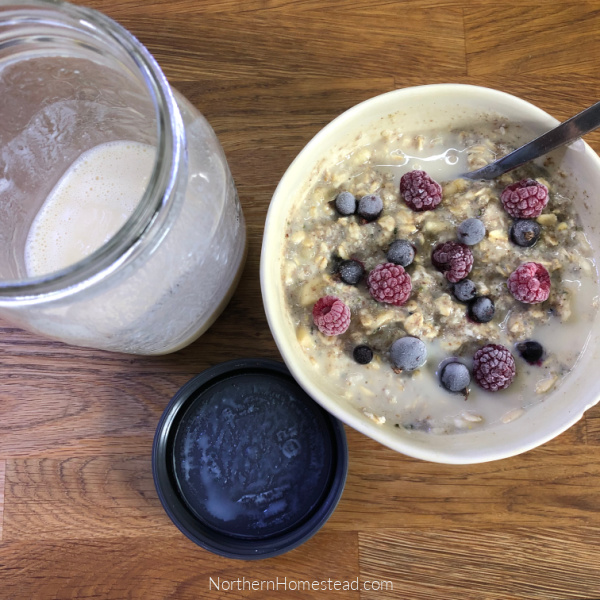
Plant-based milk beverages have really become popular. One can find different varieties for every taste and situation. Different kinds of plant milk also have different nutritional content. It is a good idea to get some variety into your diet.
For baking, we like oat milk, for cooking coconut milk, and for breakfast porridge soy milk. Soy milk is the one we use the most.
Since we like homemade food, the question came up if we could make homemade soy milk. After some research we found that it is fairly easy to do, the challenge we found was the amount of okara that was left from the milk production.
Sure there are yummy recipes out there, and some are really tasty, but we are not used to using so much of the okara. We use the milk daily for breakfast, but to use okara also daily just didn’t appeal to us.
Just so it would not be wasted, Jakob started adding some of it to his breakfast muesli. That’s when it occurred to us why do we separate it first (as most soy milk recipes suggest) and then add it back in? We had to try not to strain the milk in the first place.
We like whole grain bread, so why not also have whole bean milk, to add to the whole-food plant-based diet.
After experimenting with it, we have come up with a recipe that we find is very wholesome and delicious.
A nice side effect is, that whole bean milk uses about half the amount of soybeans.
The benefits of soy
Soy has been a very controversial bean for a long time. But it really is just another variety of beans, that happens to be particularly healthy and mild in taste.
Like other beans, soy is high in fiber, iron, magnesium, potassium, protein, and zinc. Soybeans naturally contain a class of phytoestrogens called isoflavones. What that means and why it is so good for us you can read here. Simply put soy is great for women who have a risk of breast cancer and is beneficial for kidneys.
Also, this study shows the positive effects of the combination of a low-fat plant-based diet and soybeans on the frequency and severity of menopausal hot flashes.
If you have questions about hormones in food, here is a book to read: Your Body in Balance: The New Science of Food, Hormones, and Health.
Some people do react negatively to soy, in that case, it is not a good option for that person. That does not mean however that soy is bad. Personally, I react to almonds, so almond milk is not a good option for me.
Where to get whole soybeans
There are many different varieties of soybeans. They do taste a bit different, but as with most store-bought products, we do not really have a way to choose between them, since they are all labeled the same.
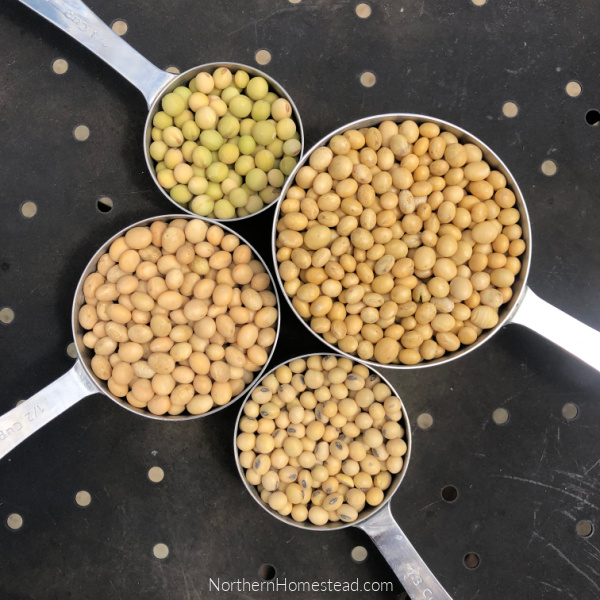
Here we have 4 different varieties. They all taste a bit different, but not enough to despise one or the other. Likewise, homemade milk does taste a bit differently from store-bought. We find it’s just a matter of getting used to it. If we have homemade milk for a while, and for some reason buy soy milk, we really don’t like the store-bought milk. But also when we started to make the milk at home, it took a bit of getting used to.
The 1/4 cup in the picture is filled with homegrown soybeans. Yes, it is possible to grow your own. Soy likes it a bit warmer than our climate is, but overall it’s just as easy to grow as any bean. We mainly grow them for companion planting in the greenhouse.
I don’t recall seeing soybeans in stores. We order it from a local bulk store. Ordering organic soybeans online is another option.
To our knowledge, all soybeans used for human consumption are non-GMO (read a correction in a comment section). You will more likely get GMO soy through animal products than through actual soybeans.
What will you need to make whole bean homemade soy milk?
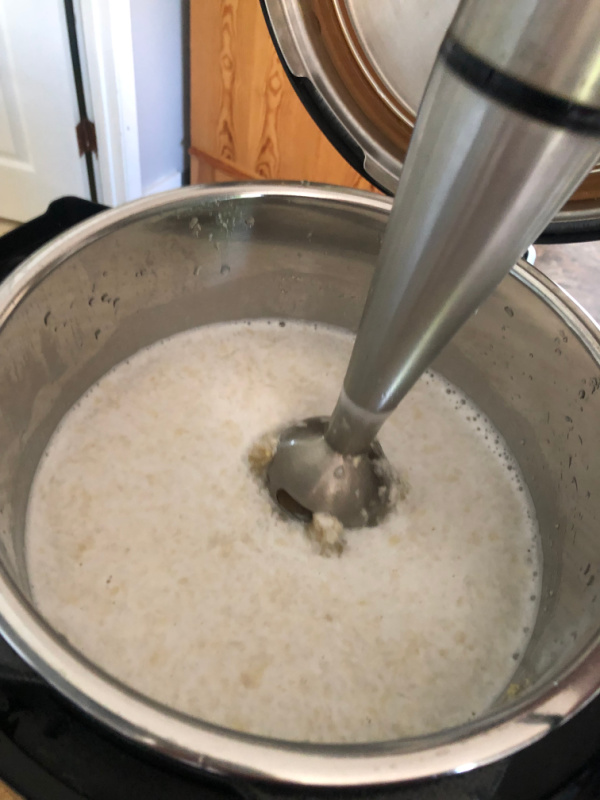
We make the soy milk in the instant pot. It makes the process easy. Any other high-pressure pot would work just as well. You can also make it in a normal pot but would have to watch it so it does not burn.
To blend the milk to a consistency that straining is not necessary, you will need a high-speed blender. We use the Vitamix, again, any other high-speed blender will work. We do not know what the milk would be like blended in a simple blender. If you do not have a high-speed blender, it is certainly worth trying.
Since we already have a hand blender as well, we use that for the first step since it’s simpler that way. However, it could be done in Vitamix too. However, it is important not to over-blend the milk before cooking. Otherwise, it sticks to the bottom and burns. So you really just want to crush the beans to get all the goodness out.
Whole bean home-made soy milk recipe
- ½ cup raw organic soybeans
- 4 - 5 cups of filtered water depending on your liking
- Salt to taste (optional)
- Rinse the beans well
- Soak in one of 3 ways
- Option 1 - Cover the beans with water and soak for 12 to 18 hours, then drain.
- Option 2 - Cover the beans with water and bring them to a boil. Cook for 2 minutes, remove from heat and soak for 1 hour. Then drain.
- Option 3- In a high-pressure pot cover the beans with water and cook at high pressure for 0 minutes. After the pot comes to pressure let rest for 1 hour. Open the lid and drain.
- In a high-pressure pot cover, the beans soaked by either method with water
- Crush the beans with a hand blender (do not over-blend)
- Cover the lid and set on high pressure for 8 minutes
- Let the pressure come down in a slow relieve
- Transfer the mixture to a high-speed blender
- Blend on high for 1 minute
- Fill into glass jars, cover, and let cool
- Store in a cool place for 3-4 days
- Shake before use
We invite you to subscribe to Northern Homestead and follow us on Facebook, Instagram, or Pinterest for more great recipes.


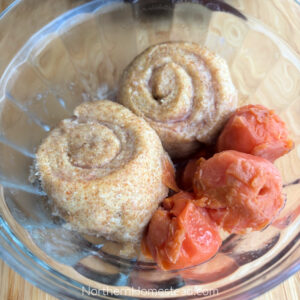
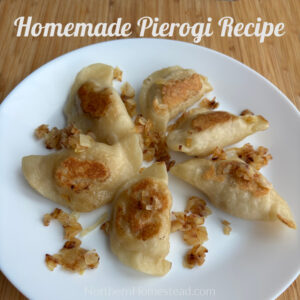
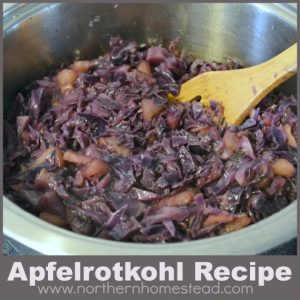



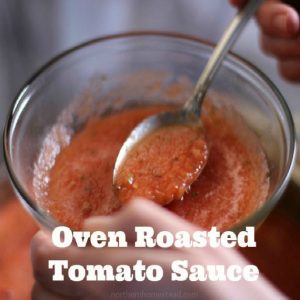



What an amazing time saver! I used to make homemade soy silk, but I also had way too much Okara to deal with and I’ve never thought that I could just blend it in to the resultant milk. Have you tried making tofu with this milk? I can’t wait to try this new way of making soy milk! Thank you!
No, we haven’t tried making tofu with this milk. But now I want to try it.
I really appreciate your blogs and your experiential lifestyle, especially as it’s relevant to me as we too are in southern Alberta.
My daughter has been making oat milk since I found some recipes (and since the baby can’t have nuts yet). It’s so easy as doesn’t require cooking, but even today we discussed the remaining solids, but she’s been too nervous about leaving the solids in. This gives me info to support my “crazy” idea. And we’ll have to try your whole soy milk recipe too for the additional and varied nutritional profile.
By the way, unfortunately it’s not true that “all soybeans used for human consumption are non-GMO.” Wikipedia says that by 2014, 82% of soy WORLDWIDE was GMO, and a couple other sites say 94% of soy in the USA is now GMO. While, according to CBAN, Canada only plants 60% of it’s soy crops to GMO varieties, and that most of that GMO soy in Canada end up in animal feed or PROCESSED FOOD, which would be used by humans. But even though Canada may grown more non-GMO soy than some other countries, a couple decades ago our government put industry over consumers by not requiring labelling of foods with GMO as ‘it would be too confusing to consumers and would make it harder on industry to keep them separate’ (I know as I worked at AgCan at the time and was assigned a project on GMOs – I left within a year). So though your chances are better of getting non-GMO soy in Canada than in the USA, you can only be sure if it is labelled as non-GMO or organic (and if I were a seller, I would label it if it was non-GMO, so I assume unlabelled soy is GMO even here).
I know it’s disappointing, but I couldn’t leave you uninformed when I so appreciate what you do.
Thank you Wanda, appreciated your correction. I have noticed that the soy products we buy are labeled non-GMO. I would guess that if it is an additive in processed food it would be not sure, right? One more reason to stay away from processed food.
Loved this item, have never made this milk before.
Have you ever tried sprouting your soybeans? I have used recipe from an old “The Beansprout Book” by Gay Courter(1973) Simply blend sprouts water and honey for 5 minutes then cook over medium heat stirring for 10 minutes. She did stain but once I got a Vitamix I no longer strained. As the highspeed can actually heat up. Sometimes I even skipped the pot cooking and just blended long enough to boil. She says yellow ones sprout best and recommended Chief, Ebony, Illini, Lincoln and Richland. I never see beans labeled but if ordering to grow your own they would be. Sprouting greatly changes, increases nutrients. Especially C, A, E, B complex, calcium… Can be harder to sprout than other things and should be rinsed more often.
Great information, thank you. I have sprouted for cooking, and they are very delicious but have not made sprouted milk.
Option 3- In a high-pressure pot cover the beans with water and cook at high pressure for 0 minutes.
Could you clarify what the correct time is (0 minutes?). Would really appreciate it! Anxious to try this recipe!!
Thank you very much.
Yes, it is 0 minutes, meaning that you only let it get to pressure but do not cook it on pressure. Hope this makes sense.